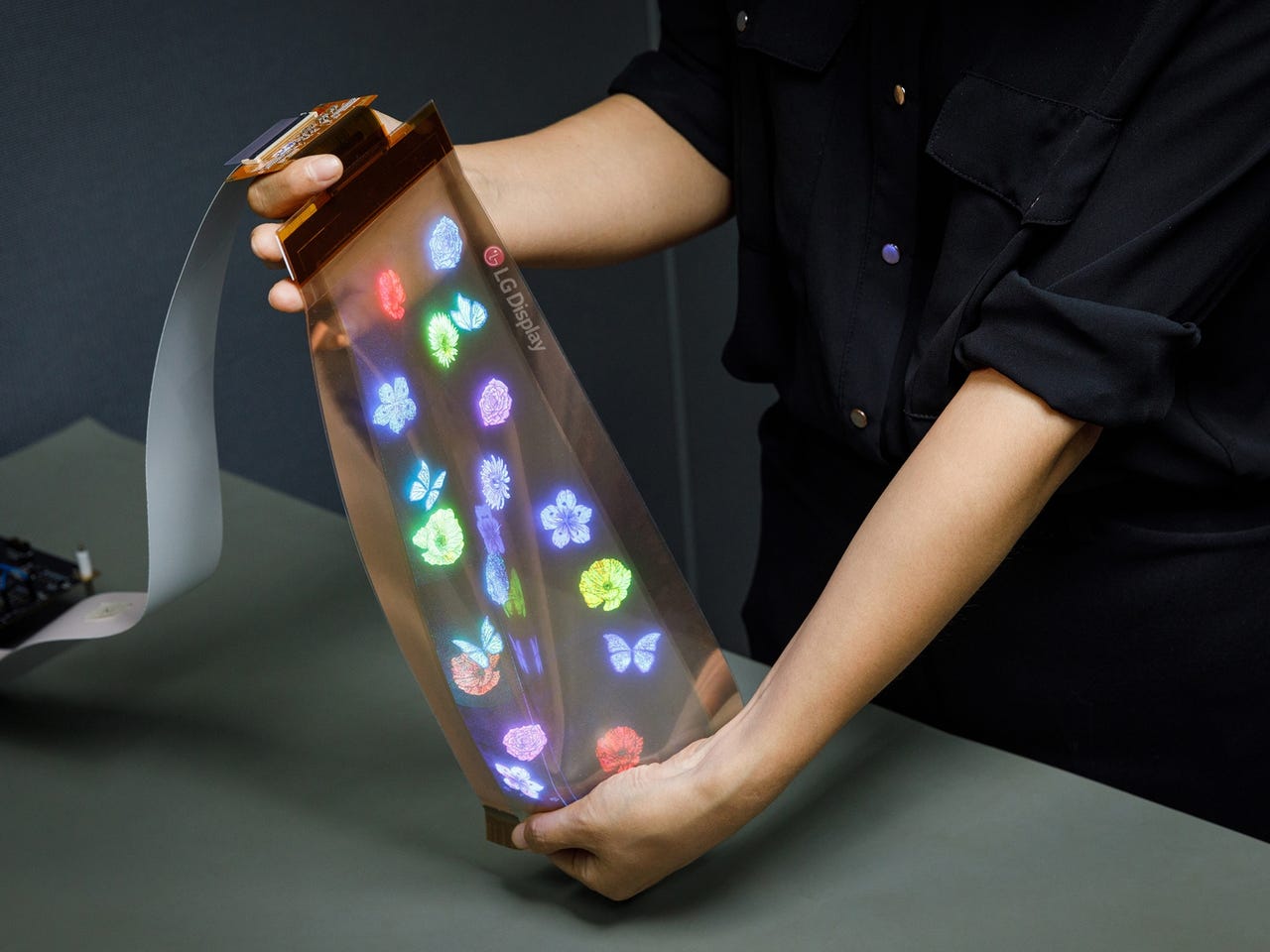LG Display develops stretchable display that elongates by 20%


Image: LG Display
LG Display said on Tuesday that it has developed a stretchable display that can be elongated by 20%.
The full-color display supports 100 pixels per inch (ppi) resolution and can be extended from 12-inch in size to 14-inch, the South Korean display panel maker said.
Also: I switched to a 16:18 monitor. Here's why you should, too
Stretchable displays, or free-form displays, are displays that can be elongated, folded, or even twisted. It is considered the next step of evolution for displays after rollable and foldable displays, which have been already commercialized by Samsung Display and LG Display.
LG Display said it used specialized silicon materials that are used in contact lenses to develop the film-type substrate for its stretchable display. This allowed the company to increase the flexibility of the display substantially, LG Display said.
ZDNET Recommends
The South Korean display panel maker also used LEDs which are 40 micrometers or smaller in size as the light source, which makes its stretchable display maintain its resolution from external shocks, the company said.
The circuits under the hood are also shaped like springs rather instead of being straight lines to accommodate bending and folding, LG Display added.
The company said it expected the display could be used in products with uneven surfaces such as furniture and clothes as well as conventional consumer products such as wearables.
For example, stretchable displays could be utilized in special uniforms of first responders to share real-time information. The displays could also be made to have bumps in certain areas that can act as buttons for the visually impaired to use touch screens more widely, LG Display said.
The company has been developing the stretchable display since 2020 in collaboration with 20 South Korean research institutes. The project is expected to conclude in 2024.